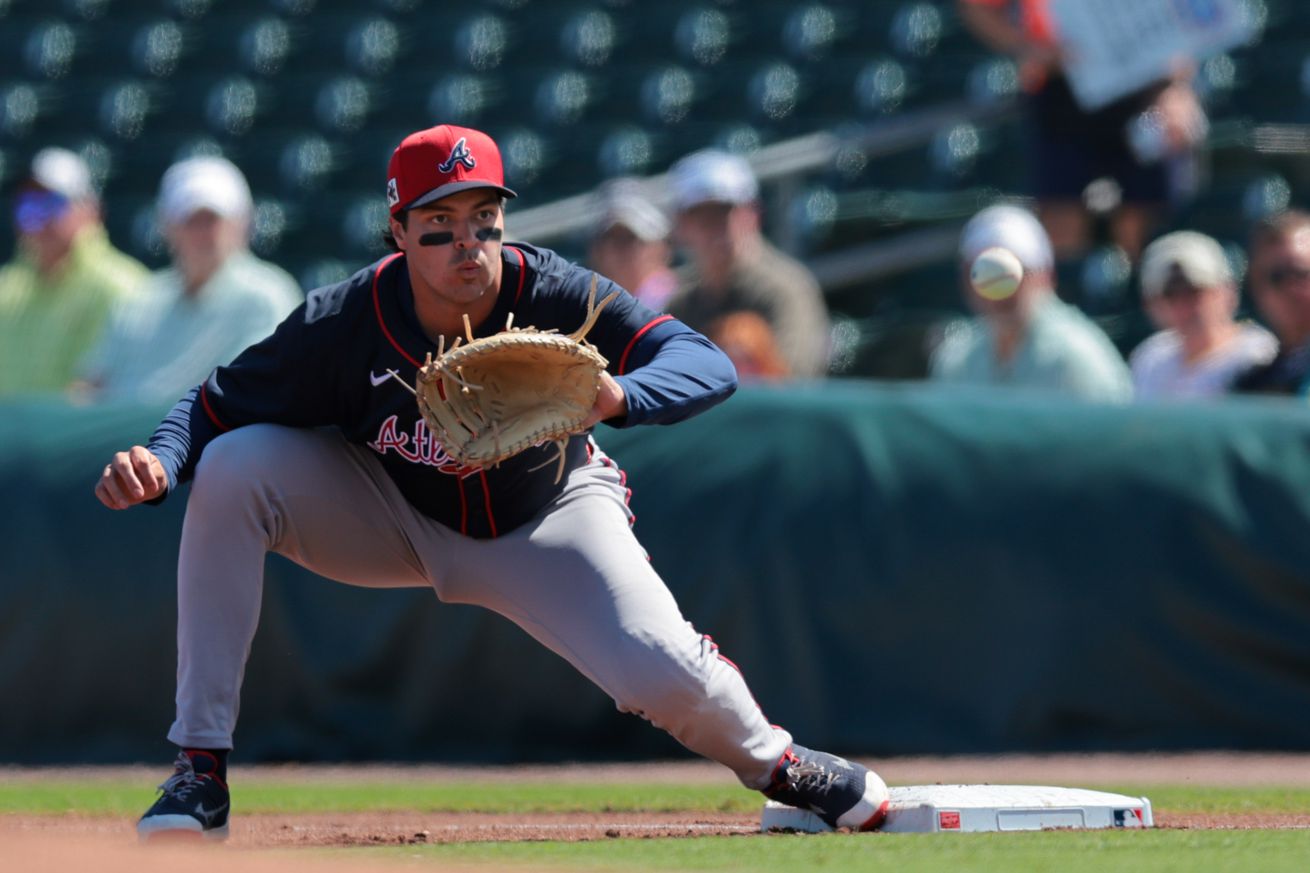
The most impressive performers on the farm system through the third week of April
After a couple of weeks of full minor league schedules the best players in the system are starting to rise to the top. A few players have been putting out utterly absurd performances this season, and below is a list of six statistics that have caught out eye across the Atlanta Braves system in April.
2.6 – David McCabe’s BB/K
David McCabe has been the best hitter in the system from the get-go this season, putting a frustrating 2025 season behind him on the way to a 196 wRC+. The biggest change for McCabe has been his ability to lay off of slider which bugged him last year, and he’s gotten his swinging strike rate back down to 2023 numbers while posting absurd walk rates. It hasn’t quite been a perfect season for McCabe as he hasn’t been lifting the ball on the pull side the way he needs to in order to tap into his power, but no one in this system is getting on base at anywhere near the clip McCabe is. His 2.60 walk-to-strikeout ratio ranks 5th among all minor leaguers with 40 or more plate appearances.
41.2% – Jhancarlos Lara’s whiff rate
After a 21 whiff performance in his last start Lara is back on track, missing bats at a high rate especially with his double plus slider. Lara is just a command step away from being a big league pitcher, and when he locks in like he did on Saturday he can post the most ridiculous outings of any pitcher in the system. For a reference point for how whacky this number is, the highest whiff rate for a starter with 200+ pitches in the statcast era was set by Jacob DeGrom at 41.2%. He’s doing absurd things when he is hot, but he can also end up on the opposite side of things. In the start prior to his 21 whiff outing he recorder just one swing-and-miss. That inconsistency plagues him, but he still flashes the highest ceiling among any Braves prospect.
34.6% – Colby Jones’s line drive rate
A 13th round pick last season, Jones has showed an impressive feel for turning on pitches and hitting them hard to the pull side. This season 34.6% of his batted balls have been recorded as line drives, helping contribute to his lofty .462 BABIP feeding a 138 wRC+. We’re seeing the Braves take a now common development approach of having Jones sit back and wait on pitches early in at bats, trying to reverse the over-aggressive trend that saw him draw a walk rate of only 4.8% last year. This season he has a 19.6% walk rate, though his tendency to swing hard has led to mediocre contact rates. Jones is the sort of low-cost, athletic infielder that is worth the late round pick given some of his traits at the plate, and with the approach tweaks the Braves are working on he is hoping to get another shot at High-A in the second half of the season.
0.79 – Logan Samuels’s ERA
Samuels leads the system in ERA amongst Braves prospects with 10 or more innings this season, and since ERA isn’t that representative let’s throw FIP in there too. His 2.27 FIP is second in the system, behind Spencer Strider. Samuels is doing pretty well to say the least. He’s been a terrific find for Atlanta for just a $10,000 signing bonus in the 8th round last season, and has shown the makings of a pitcher who could end up in the back end of a major league rotation. He has commanded the ball well and continued to show a mix of secondaries, with the biggest development being the velocity progression since his college days. Despite him being 23 years old there is still some projection for Samuels, and he could be a player that finds his way into Double-A towards the end of the season.
23.8% – Luis Vargas’s Swinging Strike %
Vargas had his first taste of attention last season when he saw a huge velocity jump to the upper 90’s, and now with a role in the bullpen full time he seems to have taken the next step. Vargas has been dominant for Rome with a 48.1% strikeout rate, a whiff rate over 40%, and a 23.8% swinging strike rate that ranks sixth in minor league baseball for pitchers with 100 or more pitches thrown. He’s throwing the most strikes of his career, and with an upper 90’s fastball and above average slider he could move to the upper levels of the system quickly if this move to relief is permanent.
0 – the number of hard hit balls Nathan Wiles has given up on his cutter
Atlanta picked up Nathan Wiles as a minor league free agent this offseason, and while it has only been three starts he is so far having the best success of his four attempts at Triple-A, largely thanks to some changes in his arsenal. Wiles has reinvented his cut fastball and started to utilize a vertical slider, and these two pitches have been absolutely dominant, combing for a whiff rate of 51.4%. The slider for Wiles made rare appearances in past seasons, but this season those two pitches have tilted, the cutter showing more glove side movement and less carry and the slider gaining depth with less horizontal movement. While it’s still too early to call this tweak a breakthrough for Wiles’s stagnated career, it seems as if he has discovered the third (and fourth) pitch long missing from his mix. With a true go-to secondary offering Wiles may find himself looking at a major league back-end starting job sometime this season, even if consistent playing time is unlikely to come in Atlanta.
